PLA Shooting Standards: Rifle Qualification
This is the first post of a series that will evaluate PLA shooting standards, from rifle to sniper qualifications.
Overview
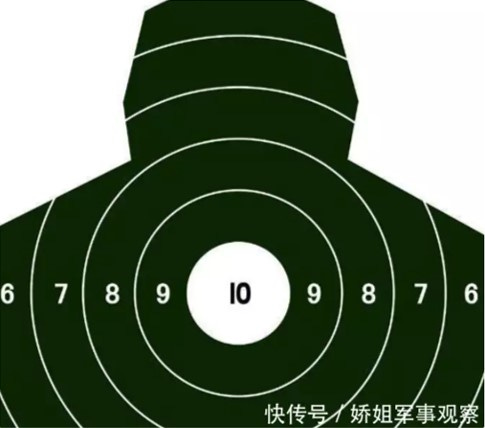
Pre-2018 Shooting Standards
The People’s Liberation Army (PLA) shooting standards can be divided into pre-2018 and post-2018 shooting standards. Pre-2018 standards involved soldiers shooting five rounds at a chest target (comparable to archery targets) in the supported prone position from 100 meters using iron sights. However, recruits received an additional pre-qualification/practice round that involved them shooting five rounds from 100 meters using the same target and firing position. The PLA used a 50-point scoring system that involves counting the number of rings where each bullet impacted. The system is then divided into three qualifications: qualified/passing 30-35 rings, good 35-45 rings, and excellent 45-50 rings. For example, a recruit/soldier will receive excellent if they receive 47 rings—three rounds impacted the target’s center (ten), one each at the eight, and nine ring.
Post-2018 Shooting Standards
However, the PLA updated their shooting standards in 2018 to include shooting from longer ranges, the positions they use, and scoring system when qualifying on their service rifles. Recruits and soldiers will now qualify using a new system consisting of shooting five rounds from the prone, kneeling, and standing positions from 100, 150, and 200 meters using iron sights. They will shoot a half-body target from the unsupported prone position from 200 meters, shoot a side target from the kneeling position, and a chest ring target from 100 meters. The recruits and soldiers will fire the required number of rounds and then move to the next firing line to fire at the subsequent distance. The new standards also include the number of rounds they can use during qualification tests to 5/8/10 bullets. However, soldiers will only use eight or ten rounds will be used primarily for shooting competitions.
The new standards also expand the point system to include a 20-point system that conforms with the number of impacts either recruits or soldiers receive during their qualification. However, the three-level qualification system was left in place since no changes were made to modify the system. Now, individuals qualifying will receive a corresponding number of points to the number of rings the rounds impacted. Any number below 29; they will receive zero points; 30 points they will receive 12 points which is qualifying. If they receive 31 to 34 rings, then they will receive 13 points; 35 rings will be given; 15 points will be awarded if they hit 36-38 rings. Individuals who score is between 39-41 rings will receive 16 points; 42-44 rings will be 17 points; 18 points will be awarded if they have 45 rings. Nineteen points will be given if individuals have 46-47 rings; and 20 points will be awarded if they have 48 and above rings.
Using the same example from the pre-2018 shooting standards, the individual would receive 19 points since the soldier or recruit shot a 47 on the targets. However, the soldier or recruit would still receive an excellent qualification since he scored above the 45 criteria for excellent.

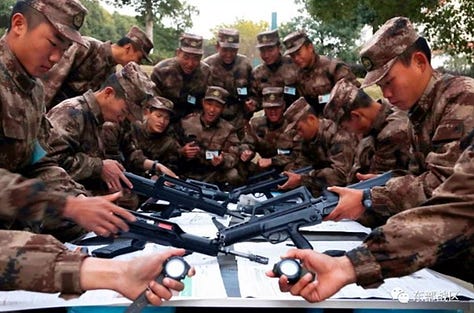

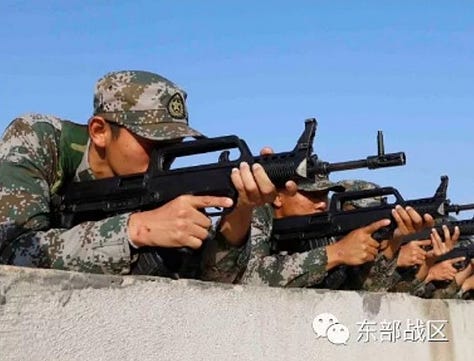

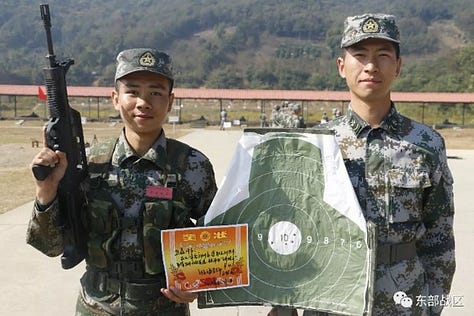
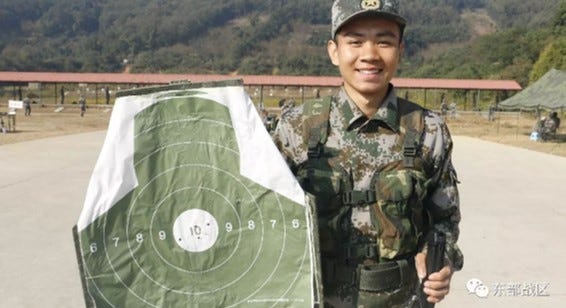
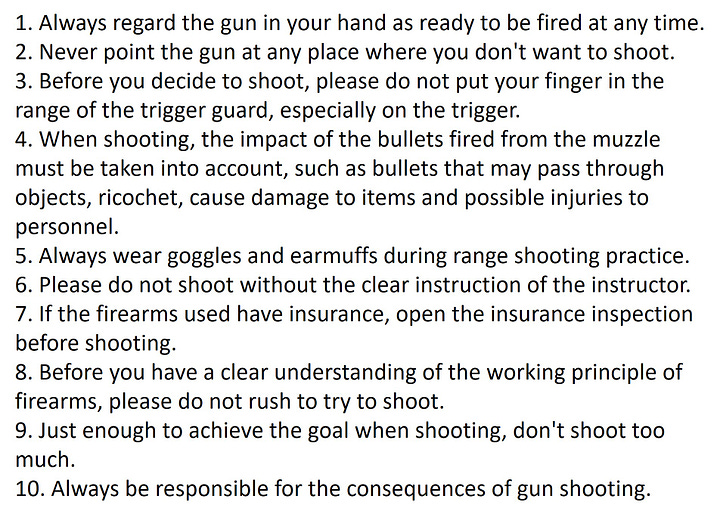
Recruit Rifle Qualification Practice
There is a four-step program to train and qualify recruits on service rifles during their initial training. The first step involves being taught basic shooting theory, a thorough explanation of the different parts of their service rifle and how it functions, and shooting principles. The recruits will be introduced to the PLA’s ten weapons handling rules and armorers will give detailed classes about the rifles. The second step involves the recruits practicing basic shooting stances such as kneeling, standing, and the prone positions. They will also practice the correct way to breathe while aiming and (dry) firing the rifles and will spend at least three months in this step. The third step of the program involves the recruits practicing the various firing positions and distances with live ammunition several times to build a good reference point for how they shoot. The recruits will also fire their rifles in the burst setting as well to familiarize themselves with the setting. The final step involves them taking exams, competing in competitions and assessments in stages, and receiving ‘sharpshooter’ certificates to promote interest to continue training.
Comparisons to Western Standards
The PLA shooting standards seem weak and not as focused on combat as the Western shooting standards such as the U.S. Army’s or USMC’s new shooting standards. For example, the U.S. Army’s standards will require soldiers to move, switch positions, and engage targets as they likely would during an enemy engagement. The new Chinese shooting standards instituted 2018 only incorporated static firing positions and do no emphasize engaging targets as quickly as possible. Another example is how the USMC’s standards now include engaging both stationary and moving targets as well as engaging stationary targets as the marines move. The targets PLA recruits and soldiers shoot at during their rifle qualifications are stationary and do not move during the event. Additionally, the PLA soldiers and recruits do not engage the targets as they move.
Analysis: While the PLA improved the shooting standards in to match the conditions found in combat, it does not compare to Western Standards such as those used by the U.S. Army or the USMC. The main reason is because of the overall lack of replicating the type of targets or conditions (i.e. using support from stationary objects) absent in the Chinese shooting standards. Another reason the PLA’s shooting standards are weaker compared to Western standards is due to the PLA only using five rounds to qualify. Conversely, soldiers and marines shoot between 40 (U.S. Army) to 160 (USMC) to qualify during the Army’s rifle marksmanship and Annual Rifle Qualification qualifications. This lack of ammunition is also reflected in the comparably low amount of ammunition – approximately 156 bullets a year – the average PLA soldier shoots during their qualification and other exercises. While training units increased the amount of ammunition recruits shoot with during rifle training program, this is to help the recruits become familiar with shooting rather than trying to increase their knowledge of shooting fundamentals. Recruits routinely shoot other recruit’s targets to their left and right because they are either anxious or excited due to never firing a firearm before joining the PLA.



